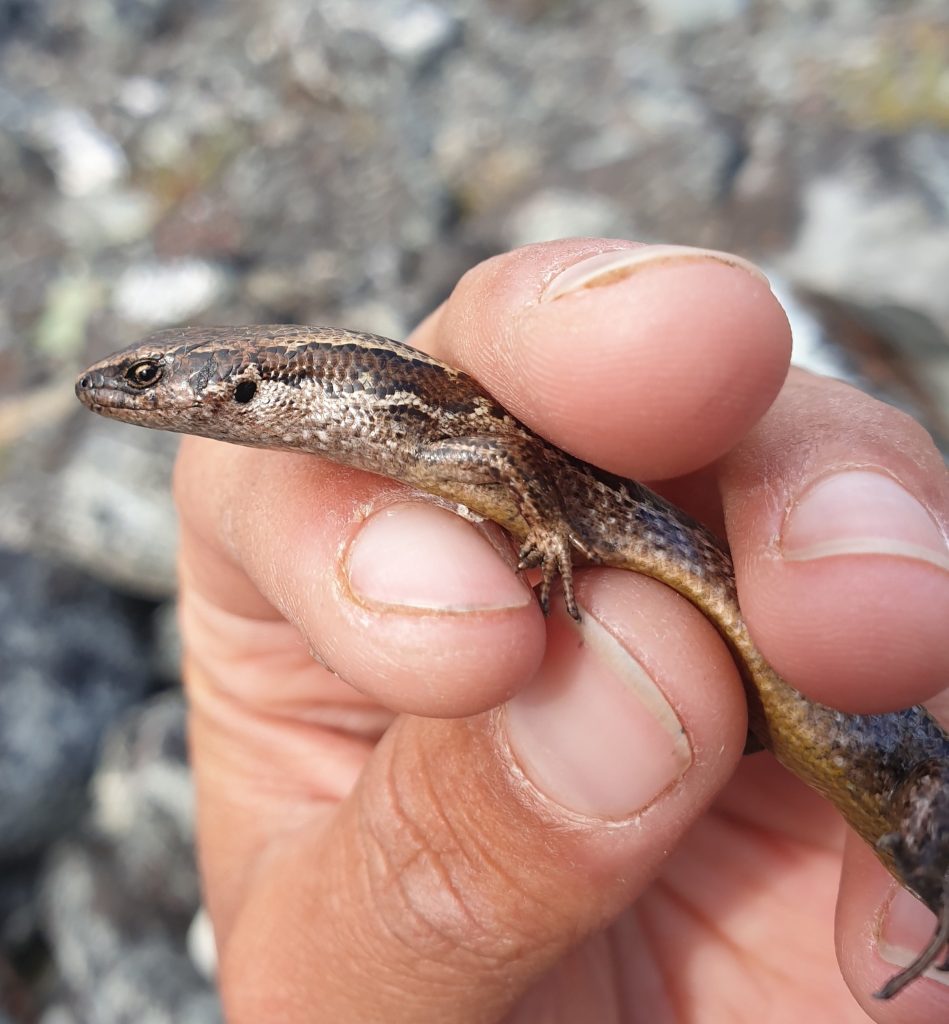Scientific name: Oligosoma aff. polychroma Clade 5
If you see a disappearing flash of brown it’s likely to be either a Southern grass skink or the more common McCanns skink.
Southern grass skinks are only found east of the main divide from Canterbury to Rakiura/Stewart Island. It has a dark tan band down the centre of its back and two cream stripes along its sides, and reaches about 80mm in length.
Until 2008 it was considered part of a widespread species called the “common skink” but it’s now known as the Southern grass skink.
They can have up to six babies at a time which is handy as this species only lives four to six years. In the project area you will find it around shrub, tussock lands or boulder slopes. It can use the burrows of invertebrates like worms, spiders and wētā to retreat from predators and to escape the winter cold.
Southern grass skinks eat small invertebrates such as spiders, insects, molluscs and worms, and they actively pursue their prey. They supplement this with some soft fruit including berries.
Photos Julia Gibson


